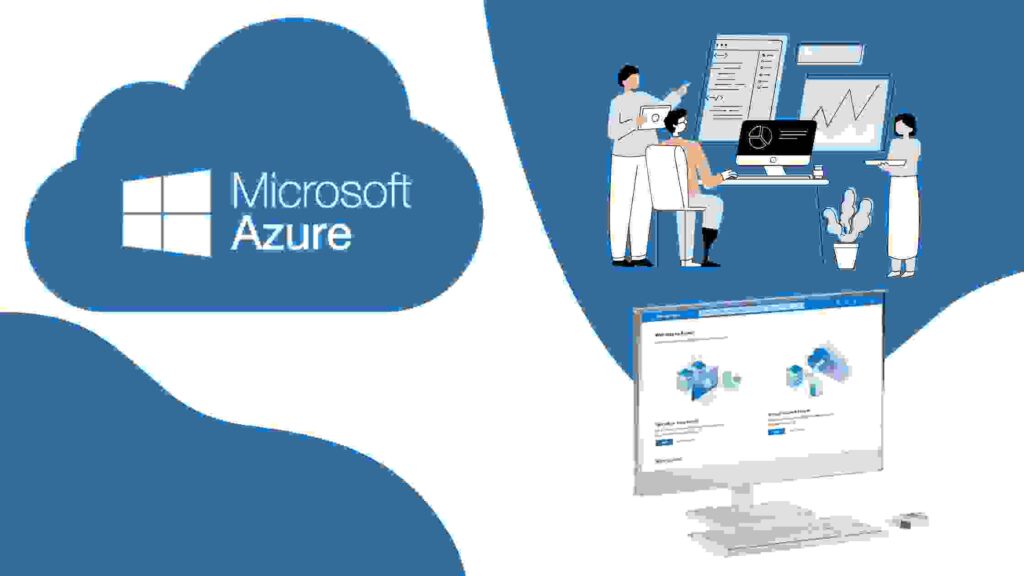
Table of Contents
Introduction
Microsoft Azure is one of the leading cloud computing platforms used by businesses worldwide to build, deploy, and manage applications in a secure and scalable environment. Whether you’re new to cloud technology or looking to deepen your understanding, this guide will walk you through everything you need to know about Microsoft Azure—from its core services and benefits to pricing and how to get started quickly.
What is Microsoft Azure?
Microsoft Azure is a comprehensive cloud computing platform developed by Microsoft. It provides a wide range of services that help businesses and developers build, deploy, and manage applications through Microsoft’s global network of data centers.
With Microsoft Azure, you can access resources such as virtual machines, databases, storage, networking, and advanced tools like artificial intelligence and analytics. This flexibility allows organizations to move parts of their IT infrastructure to the cloud, reducing the need for on-premises servers and lowering costs.
One of the main advantages of Microsoft Azure is that it supports multiple programming languages, frameworks, and operating systems. Whether you’re running Windows or Linux workloads, or building applications with .NET, Java, Python, or Node.js, Azure can handle it all.
Businesses of all sizes use This Company to scale their operations, improve security, and speed up innovation. From hosting websites to running big data analytics or deploying machine learning models, this company offers the tools to make it possible.
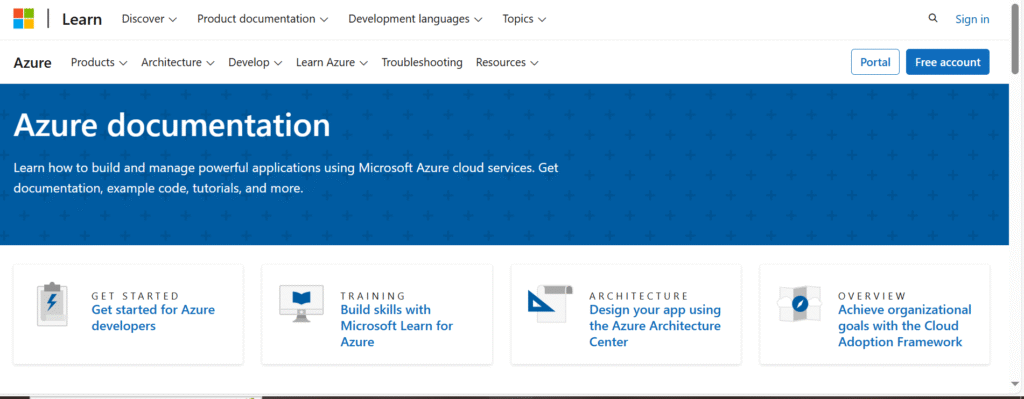
Core Services of Microsoft Azure
This Company offers a broad set of core services that help businesses build and run applications efficiently in the cloud. These services cover everything from computing power and storage to networking and artificial intelligence.
Here are some of the most important core services of Microsoft Azure:
- Azure Virtual Machines
Create Windows or Linux virtual servers in minutes. Azure Virtual Machines let you host applications, test new software, or run workloads without maintaining physical hardware. - Azure App Service
Build and host web apps, RESTful APIs, and mobile backends. This fully managed service takes care of scaling, security patches, and high availability automatically. - Azure SQL Database
Use a fully managed relational database that offers built-in backups, scaling, and security. Azure SQL Database helps you store and query data without managing servers. - Azure Storage
Secure, scalable storage for unstructured data such as files, blobs, and queues. Azure Storage makes it easy to store and access large amounts of data anywhere in the world. - Azure Kubernetes Service (AKS)
Deploy and manage containerized applications using Kubernetes. AKS simplifies container orchestration and integrates with Azure monitoring and security tools. - Azure Functions
Run small pieces of code without worrying about servers. Azure Functions automatically scale based on demand, making them perfect for event-driven workloads. - Azure AI and Machine Learning
Build intelligent solutions with pre-built AI models and custom machine learning workflows. Azure provides tools for speech recognition, computer vision, and natural language processing.
These core services make This Company a flexible and powerful platform for any type of project, whether you’re hosting a simple website or building complex enterprise applications.
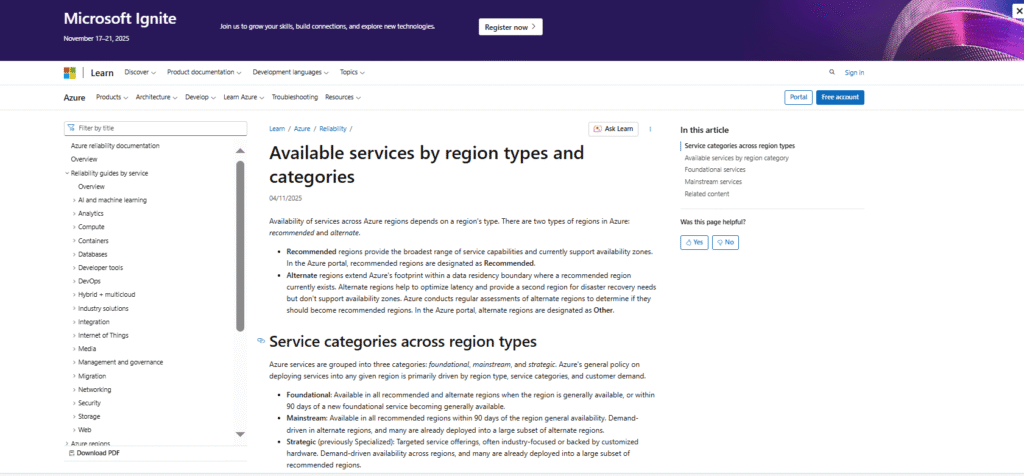
Benefits of Using Microsoft Azure
Using Microsoft Azure offers many advantages for businesses, developers, and IT teams looking to move to the cloud. Here are some of the most important benefits of using This Company:
- Scalability and Flexibility
Microsoft Azure makes it easy to scale resources up or down based on your needs. Whether you need more computing power during peak times or want to reduce capacity when demand is low, Azure adjusts automatically. - Cost Efficiency
With a pay-as-you-go pricing model, you only pay for what you use. Microsoft Azure also offers reserved instances and cost management tools that help you optimize your spending. - Global Reach
Azure operates in more than 60 regions worldwide. This means you can deploy your applications closer to your users to improve performance and meet data residency requirements. - Security and Compliance
Microsoft Azure provides built-in security features such as encryption, identity management, and threat detection. Azure also meets many compliance standards, including ISO, HIPAA, and GDPR, giving organizations peace of mind. - Integration with Microsoft Products
Azure integrates seamlessly with popular Microsoft tools like Office 365, Dynamics 365, and Windows Server. This makes it easier for teams already using Microsoft products to move workloads to the cloud. - Innovation and Advanced Technologies
This Company gives you access to advanced services like artificial intelligence, machine learning, analytics, and Internet of Things (IoT). These tools help businesses innovate faster and create smarter applications.
Overall, Microsoft Azure offers a reliable and secure cloud platform that supports a wide variety of workloads, from small websites to enterprise-grade solutions. Its combination of scalability, global availability, and integrated tools makes it one of the most popular cloud services in the world.

Microsoft Azure Pricing Explained
Understanding Microsoft Azure pricing is an important step before moving your workloads to the cloud. Microsoft Azure uses a pay-as-you-go pricing model, which means you only pay for the resources you consume. This flexible approach helps businesses of all sizes control costs and avoid overpaying for unused capacity.
Here are the main factors that determine how much you pay with Microsoft Azure:
- Type of Service
Different services have different pricing structures. For example, Azure Virtual Machines are billed per second based on the size and operating system, while Azure Storage is charged based on the amount of data stored and transactions performed. - Region
The cost of services can vary by geographic region. Deploying resources in certain data centers may be more affordable, while others can be more expensive depending on demand and availability. - Usage Volume
The more you use a service, the more you pay. However, Azure offers discounts for higher usage tiers and long-term commitments. - Reserved Instances and Savings Plans
If you commit to using specific resources for one or three years, you can save up to 72% compared to pay-as-you-go pricing. This is especially useful for predictable workloads. - Free Services and Credits
Microsoft Azure provides a free tier that includes limited monthly usage for popular services, as well as $200 in credits for new accounts to try any Azure service during the first 30 days.
Tip: To estimate your costs accurately, use the Azure Pricing Calculator. This online tool lets you select services, set configurations, and see a detailed breakdown of expected charges.
By understanding how Microsoft Azure pricing works, you can plan your budget more effectively and avoid surprises on your bill. Whether you are running a small app or an enterprise-grade solution, Azure gives you the flexibility to pay only for what you need.
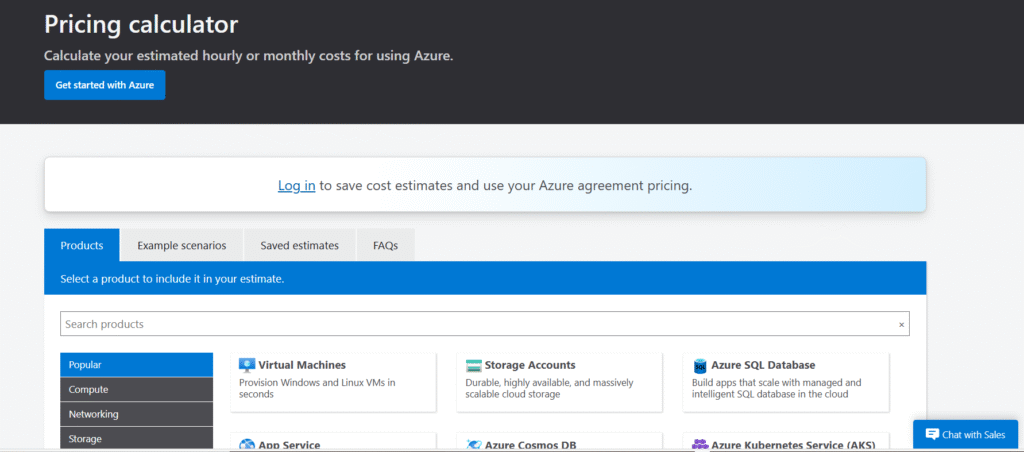
How to Get Started with Microsoft Azure
Getting started with Microsoft Azure is simpler than you might think. Whether you are a developer, a business owner, or an IT professional, you can begin using Azure in just a few steps.
Here’s a straightforward guide to help you start:
- Create a Microsoft Azure Account
- Visit the official Microsoft Azure website and sign up for a free account.
- New users receive $200 in credits to try any Azure service for 30 days.
- You’ll also get free access to popular services with monthly usage limits even after your credits expire.
- Explore the Azure Portal
- The Azure Portal is a web-based dashboard where you can manage all your resources.
- Here, you can create virtual machines, set up databases, configure storage, and monitor your usage.
- Take some time to explore the interface and learn where to find the tools you need.
- Choose the Services You Need
- Decide what you want to build or migrate to the cloud.
- For example, you might set up a virtual machine to host an app, create an Azure SQL Database, or deploy a website using Azure App Service.
- Microsoft Azure offers templates and quick-start guides to help you configure these services quickly.
- Deploy and Configure Resources
- Use the Azure Portal, Azure CLI, or PowerShell to deploy your chosen resources.
- You can customize your configurations such as virtual machine sizes, storage types, and networking settings.
- Monitor and Optimize Your Environment
- After deploying your resources, use Azure Monitor and Cost Management tools to track performance and spending.
- Set alerts to stay informed about usage and potential issues.
- Learn and Grow Your Skills
- Microsoft offers free online training, documentation, and certifications to help you deepen your Azure knowledge.
- Visit the Microsoft Learn platform for tutorials and learning paths.
By following these steps, you can quickly start using Microsoft Azure to build, host, and scale your applications. The platform is designed to be flexible, so you can grow and adapt as your needs change.
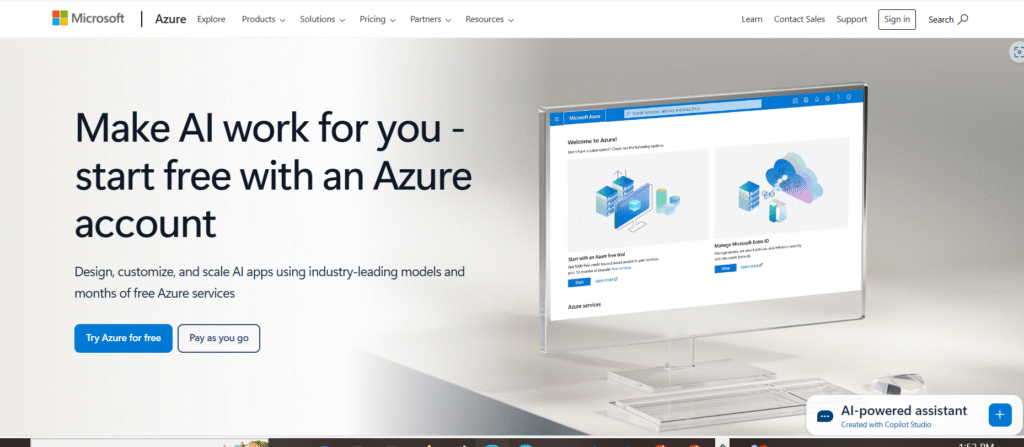
Frequently Asked Questions
Below are some common questions people ask about Microsoft Azure. These answers can help you better understand how Azure works and why so many businesses rely on it.

Is Microsoft Azure free to use?
Microsoft Azure offers a free account that includes $200 in credits you can use during the first 30 days. After that, you get limited free monthly amounts of popular services such as Azure App Service, Azure Functions, and Azure Storage. This is a great way to try Microsoft Azure before committing to paid plans.
How secure is Microsoft Azure?
Security is one of the biggest strengths of Microsoft Azure. The platform has built-in security controls, encryption, network protection, and advanced threat detection. Azure also meets a wide range of compliance standards, including ISO, GDPR, HIPAA, and SOC, making it a trusted choice for organizations in regulated industries.
Which companies use Microsoft Azure?
Thousands of companies across different industries use Microsoft Azure. This includes startups, government agencies, and large enterprises like BMW, Samsung, and the U.S. Department of Defense. Businesses choose Azure because of its reliability, scalability, and integration with other Microsoft products.
Can I run Linux on Microsoft Azure?
Yes. Microsoft Azure fully supports Linux-based virtual machines and containers. You can deploy popular Linux distributions such as Ubuntu, Red Hat Enterprise Linux, and CentOS. Azure also provides tools to manage and monitor Linux workloads effectively.
What are the main benefits of using Microsoft Azure?
The main benefits include:
- Scalability: Easily adjust resources up or down as needed.
- Global reach: Deploy services in data centers around the world.
- Cost efficiency: Pay only for what you use.
- Security: Advanced protection and compliance features.
- Flexibility: Support for Windows, Linux, containers, and multiple programming languages.
If you have more questions about Microsoft Azure, you can explore the official Azure documentation or reach out to Azure support for personalized help.
Conclusion
In summary, Microsoft Azure is a powerful and flexible cloud platform that helps businesses of all sizes build, deploy, and manage applications more efficiently. With its wide range of services—from virtual machines and databases to AI tools and advanced security—Azure makes it easier to scale operations, control costs, and innovate faster. Whether you’re moving existing workloads to the cloud or creating new solutions, Microsoft Azure offers the tools and reliability you need to succeed in today’s digital world.